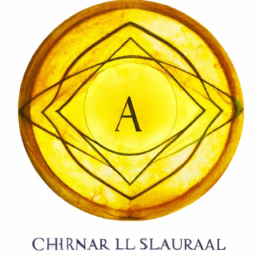The human body is a complex and fascinating system, composed of various energy centers called chakras. These chakras play a vital role in maintaining the physical, emotional, and spiritual well-being of an individual. Of the seven main chakras in the body, the solar plexus chakra holds a significant position. It is the third chakra, also known as the Manipura, meaning “lustrous gem” in Sanskrit. This chakra is associated with the element of fire, and it symbolizes personal power, self-esteem, and strength. In this article, we will explore the location and significance of the solar plexus chakra in the body.
The Location of the Solar Plexus Chakra
The solar plexus chakra is located in the upper abdomen, above the navel and below the chest, in the area of the diaphragm. It is in the center of the abdomen, around the stomach area, and extends towards the back. According to ancient Indian traditions, the solar plexus chakra is situated at the base of the rib cage, connected to several important organs such as the liver, stomach, pancreas, and intestines. It is also believed to be the center of the physical and emotional aspects of one’s being.
The Symbolism of the Solar Plexus Chakra
The solar plexus chakra is associated with the color yellow, representing will, personal power, and vitality. The shape of the chakra symbol is a ten-petaled lotus flower, with a downward-facing triangle in its center. The triangle symbolizes the fire element and the masculine energy of the sun, while the lotus represents the transformative power of the chakra. The ten petals symbolize the ten pranas or vital energies that flow through the human body.
The Significance of the Solar Plexus Chakra
The solar plexus chakra is responsible for regulating the energies of the digestive system and other organs in the abdomen. It is also associated with the emotional aspects of one’s being, such as self-confidence, self-esteem, and personal power. A balanced solar plexus chakra enables an individual to take control of their life and make decisions based on their personal power and will. It empowers one to overcome self-doubt, fear, and insecurities, and be confident in one’s abilities and self-worth.
On the other hand, when the solar plexus chakra is imbalanced, it can manifest in physical and emotional problems. Physical symptoms may include digestive issues, stomach ulcers, and chronic fatigue. Emotionally, an imbalanced solar plexus chakra can result in a lack of confidence, feelings of inadequacy, and low self-esteem. It can also lead to controlling and dominating behaviors, as well as feelings of powerlessness and victimization.
How to Balance the Solar Plexus Chakra
Practicing mindfulness and incorporating specific healing techniques can help balance the solar plexus chakra. Yoga and meditation are effective in balancing the energies of the chakra. Poses such as the boat pose, warrior pose, and twists, stimulate the solar plexus chakra and promote its balance. Guided meditation and visualization techniques can also help remove blockages and restore balance to the chakra, promoting a sense of confidence and self-worth.
Aromatherapy can also be beneficial in balancing the solar plexus chakra. Essential oils like lemon, grapefruit, and peppermint have energizing and grounding properties that can stimulate the chakra and promote its balance. Using these oils in a diffuser or applying them topically can help alleviate imbalances in the chakra.
In Conclusion
The solar plexus chakra, located in the center of the abdomen, plays a crucial role in maintaining physical, emotional, and spiritual well-being. It represents personal power, self-esteem, and strength, and an imbalance in this chakra can lead to various physical and emotional issues. Practicing mindfulness and incorporating healing techniques can help balance the solar plexus chakra and promote overall well-being. Nurturing and maintaining the energies of the chakra is essential for achieving a healthy, harmonious, and balanced life.





The Solar Plexus Chakra is located between the navel and the rib cage.